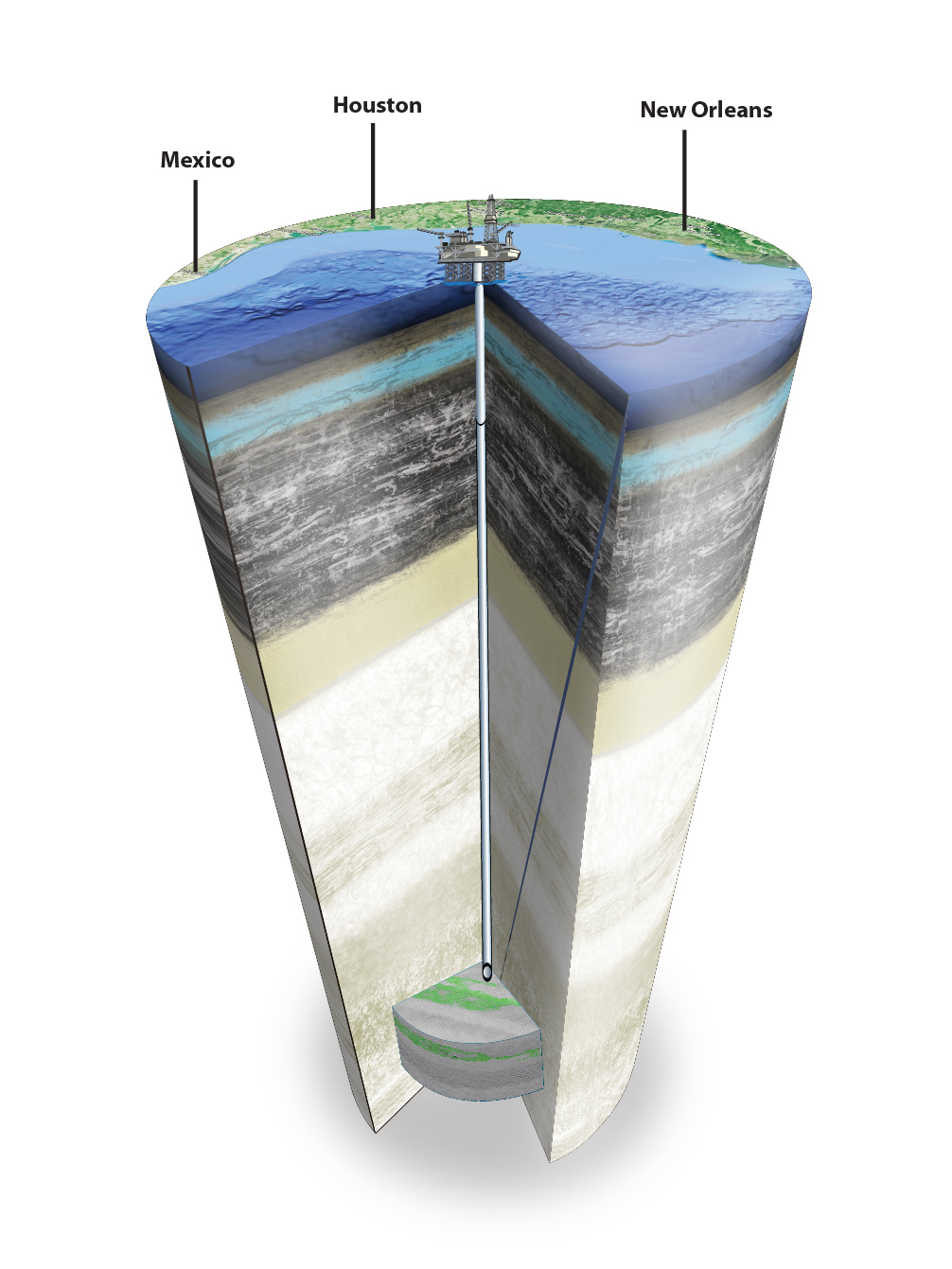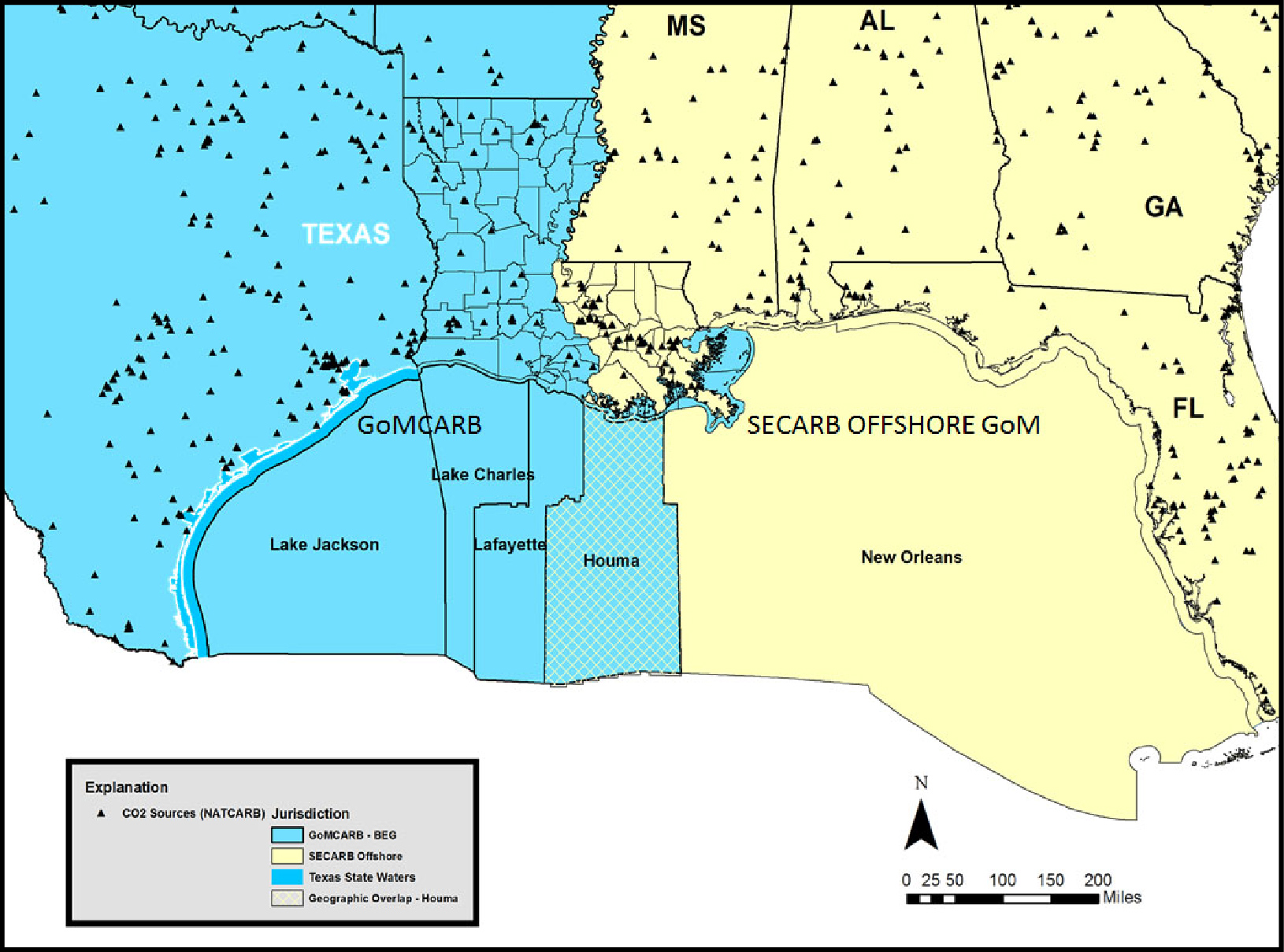
Offshore CCS is a process of capturing CO2 emissions at point sources onshore and transporting them offshore, where the fluid is injected and stored deep underground in rock layers—similar in some ways to how oil and gas are trapped.
Recently, the Bureau of Economic Geology’s Gulf Coast Carbon Center (GCCC) joined the Southern States Energy Board (SSEB) for 2 days to conduct their annual joint partnership meeting—for the first time via webinar. Participants provided key updates on the research projects they lead on carbon capture and storage (CCS) in the Gulf of Mexico region.
In 2018, the GCCC and the SSEB became principal investigators of two different multi-million-dollar projects funded by the Department of Energy (DOE) to explore carbon capture and offshore geological carbon storage in the subsurface under the U.S. Gulf of Mexico. The Gulf of Mexico Partnership for Offshore Carbon Storage (GoMCarb), led by the GCCC, explores the potential in the western Gulf region from western Louisiana to Texas. The second project, led by SSEB and called SECARB Offshore, explores the potential in the eastern Gulf region from eastern Louisiana to Florida.
GoMCarb researchers gave updates throughout the first day on topics ranging from characterizing the subsurface geology of potential CO2 storage sites to transportation and infrastructure needs, risk assessment, subsurface monitoring, and stakeholder engagement in the GoMCarb project. GCCC members, including Susan Hovorka, Tip Meckel, Alex Bump, Sahar Bakhshian, Emily Moskal, Dallas Dunlap, and Iulia Olariu, gave presentations. Presentations were also given by partners at the U.S. Geological Survey, Lawrence Berkeley National Laboratory, Lawrence Livermore National Laboratory, Rice University, Lamar University, Total, Trimeric, and The University of Texas at Austin petroleum engineering, geophysics, and advertising departments.
The SECARB Offshore and the GoMCarb projects advance and mature a series of offshore studies funded by the DOE. At the meeting, researchers presented maps of dozens of structurally defined fetch and trap areas with the potential to be developed as storage complexes. The internal sedimentary architecture of several areas shows favorable stacked traps and seals as well as defines the bounding faults. New work on infrastructure has advanced the potential for pipeline reuse, and, for the first time, risk-assessment work considered the impact and mitigation of offshore well blowouts that intersect stored CO2 plumes. The researchers are excited about the opportunities ahead for offshore CCS in the Gulf States, matched by the recent uptick in industry interest.
The GoMCarb project runs through 2023. Each year, the GCCC and SSEB hold a joint partnership meeting to provide updates. For more details on the Gulf of Mexico Partnership for Offshore Carbon Storage, visit the project webpage.

The GoMCarb project works in the state waters off the coast of Texas and Louisiana.